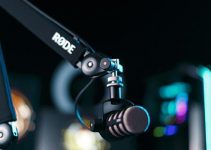For the longest time, shooting with a full-frame camera has been the goal of every aspiring filmmaker. With a wider field of view and better image quality, there’s no surprise as to why people who shoot film strive to invest every dime they have into a full-frame DSLR or mirrorless from the likes of Sony and Canon.
On the other hand, there is a growing number of videographers who dispute this belief, stating that depending on your style of shooting, it would be best to use a Micro 4/3 camera over a full-frame. Filmmaker Tom Ryan recently spurred a rigorous debate regarding the topic with a video that explains five reasons as to why you may want to consider upgrading to a Micro 4/3 instead of a full frame camera.
For starters, Micro 4/3 cameras provide a deeper depth of field compared to full-frame cameras. While many filmmakers strive for a shallower depth-of-field, Ryan proposes that many cinematographers nowadays tend to shoot at a T-stop greater than 2.8, opting for a background that’s more in-focus, versus a blurry one.
That being said, Micro 4/3 cameras can get a deeper field of view easier than full-frame cameras because of the sensor’s dimensions and crop factors. Furthermore, if you want to get the aesthetic of a full-frame camera, you can simply purchase a Metabones Speedbooster and lower your aperture.
As Ryan claims, it is very easy to emulate the shallow focus of a full frame sensor by using an adapter on a camera with a Micro 4/3 sensor. However, the opposite is not true as it is difficult to mimic the deep focus nature of a Micro 4/3 sensor when using a full-frame camera.
Because a Micro 4/3 sensor is smaller than a full-frame, the camera’s onboard processor has to tackle less image information. This allows Micro 4/3 cameras to include professional features such as 10-bit internal video recording. This processor concept is very likely a contributing factor to Sony and Panasonic’s differentiating recording options.
For instance, Panasonic’s GH5 camera use a Micro 4/3 sensor and can record 10-bit in-camera, whereas Sony’s A7III features a full-frame sensor but only shoots 8-bit internally. The reason why Panasonic is able to include 10-bit recording is arguably due to the fact that the processor doesn’t have to cope with as much image information from a large sensor, such as those in a full-frame camera.
In addition to having lower processing requirements, the reduced size of the Micro 4/3 sensor leads to a smaller image circle, which results in significantly reduced vignetting when using either Full Frame or APS-C style lenses with a Micro 4/3 camera.
Speaking of which, because of the reduced size of Micro 4/3 sensors compared to full-frame, the lenses and camera bodies are much smaller and lighter. This allows you to easily carry around your camera and lenses when you’re on the go.
The final point made in the video is that Micro 4/3 cameras can offer more features for a lower price than a full-frame rival. Because Micro 4/3 sensors are smaller, they cost less to produce. This means that companies like Panasonic can sell Micro 4/3 cameras for less than a full-frame, all while packing in more software features for better video recording for the price.
Even though Ryan makes valid points towards Micro 4/3 cameras, keep in mind that the decision as to which type of camera you buy ultimately revolves around the types of projects you’re shooting. Neither this article, nor the video are out to prove which sensor size is better, but rather highlight the value of Micro 4/3 sensors in filmmaking – explaining the best use cases of the sensor.
[source: Tom Ryan]
Disclaimer: As an Amazon Associate partner and participant in B&H and Adorama Affiliate programmes, we earn a small comission from each purchase made through the affiliate links listed above at no additional cost to you.
Claim your copy of DAVINCI RESOLVE - SIMPLIFIED COURSE. Get Instant Access!



